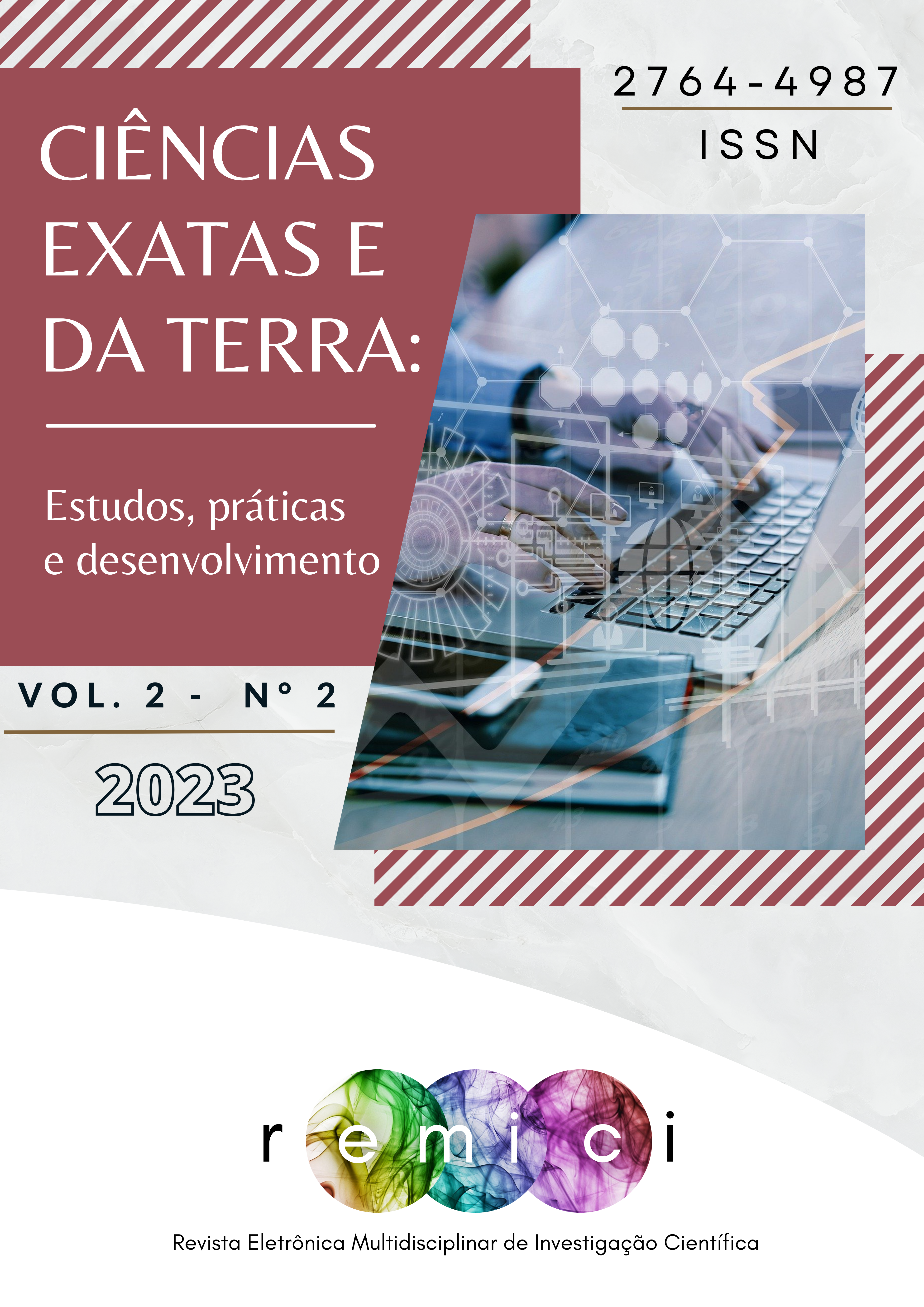A SHOCK RESPONSE MODEL IN GROWING GREENHOUSE GAS EMISSIONS
Conteúdo do artigo principal
Resumo
The present article identified what would be the impacts on the productive quantity of five large agricultural segments, if there was an increase in GHG emissions in Brazil. Methodologically, a Structural Vector Auto Regression Model was structured and operated with data between the years 1970 and 2018. The following information was used: the level of emissions produced by the Agriculture, Forestry and Other Land Use (AFOLU) sector, the quantity of sugarcane, corn and coffee produced, as well as the cattle and swine breeding stock. In general, the results obtained reveal the importance of controlling the level of emissions generated, as there was a reduction in the production of all studied segments. Thus, considering emissions from AFOLU, it is concluded that all sectors chosen for the study will suffer losses in production if there is no control over future emissions, indicating the need for pro-environmental public policies for the agricultural sectors.
Detalhes do artigo

Este trabalho está licenciado sob uma licença Creative Commons Attribution-NonCommercial-ShareAlike 4.0 International License.
Referências
BAZAN, G. Our Ecological Footprint: reducing human impact on the earth. Electronic Green Journal. 1(7), 1997. Disponível em: https://web.archive.org/web/20211217050304id_/https://escholarship.org/content/qt7730w81q/qt7730w81q.pdf?t=q9ns62. Acessado em: Fev, 2023.
BOTELHO, L. M. S.; SUELA, A. G. L. EVOLUÇÃO E DISTRIBUIÇÃO DO PRONAF ENTRE 2017 E 2022: UM ESTUDO MULTIRREGIONAL DAS LINHAS CUSTEIO E INVESTIMENTO. Revista Eletrônica Multidisciplinar de Investigação Científica, v. 2, n. 1, 2023. Disponível em: https://www.remici.com.br/index.php/revista/article/view/47. Acessado em: Fev, 2023.
BROOKS, J. Brazilian Agriculture: Balancing Growth with the Need for Equality and Sustainability. EuroChoices, 16(1), 32–36. 2017. Disponível em: https://onlinelibrary.wiley.com/doi/epdf/10.1111/1746-692X.12148. Acessado em: Fev, 2023.
COHN A. S. et. al. Cattle ranching intensification in Brazil can reduce global greenhouse gas emissions by sparing land from deforestation. PNAS. 111. 7236-7241. 2014. Disponível em: www.pnas.org/cgi/doi/10.1073/pnas.1307163111. Acessado em: Fev, 2023.
COSTANZA, R. et. al. Twenty years of ecosystem services: How far have we come and how far do we still need to go? Ecosystem Services. 28. 1-16. 2017. https://www.build-solutions.org/wp-content/uploads/2019/11/Costanzaal-2017-ES.pdf. Acessado em: Fev, 2023.
EMPRESA BRASILEIRA DE PESQUISA AGROPECUÁRIA – Embrapa. Visão 2030: o futuro da agricultura brasileira. Brasília, DF. p. 212. 2018. Disponível em: https://www.embrapa.br/documents/10180/9543845/Vis%C3%A3o+2030+-+o+futuro+da+agricultura+brasileira/2a9a0f27-0ead-991a-8cbf-af8e89d62829?version=1.1. Acessado em: Fev, 2023.
ENDERS, W. Applied econometric time series. New York: John Wiley, 433p. 1995. Disponível em: https://core.ac.uk/download/pdf/14456784.pdf. Acessado em: Fev, 2023.
FERREIRA-PAIVA, L. et al. A k-means-based-approach to analyze the emissions of GHG in the municipalities of MATOPIBA region, Brazil. IEEE Latin America Transactions. v. 20, n. 11, p. 2339-2345, 2022. Disponível em: https://ieeexplore.ieee.org/abstract/document/9904758. Acessado em: Fev, 2023.
FOOD AND AGRICULTURE ORGANIZATION OF THE UNITED NATION – FAO, OECD- FAO Agricultural Outlook 2019-2028. 2019. Disponível em: https://www.oecd-ilibrary.org/agriculture-and-food/oecd-fao-agricultural-outlook-2019-2028_agr_outlook-2019-en. Acessado em: Fev, 2023.
FRANKLIN, S. L.; PINDYCK R. S. Tropical Forests, Tipping Points, and the Social Cost of Deforestation. Ecological Economics. 153. 161-171. Disponível em: https://www.nber.org/system/files/working_papers/w23272/w23272.pdf. Acessado em: Fev, 2023.
GODFRAY, H. C. J. et. al. Food Security: The Challenge of Feeding 9 Billion People. Science. 327. 812-818. 2010. Disponível em: http://www2.esalq.usp.br/pg/docs/art02_212.pdf. Acessado em: Fev, 2023.
INSTITUTO BRASILEIRO DE GEOGRAFIA E ESTATÍSTICA - IBGE. Para 1931-1987: Estatísticas históricas do Brasil: séries econômicas, demográficas e sociais de 1550 a 1988. 2. ed. rev. e atual. do v. 3 de Séries estatísticas retrospectivas. Rio de Janeiro: IBGE, 1990. Apud: Estatísticas do século XX, Centro de documentação e disseminação de informações. Rio de Janeiro: IBGE, 2003. Disponível em: https://www.ibge.gov.br/estatisticas/sociais/populacao/25089-censo-1991-6.html?edicao=25091&t=publicacoes. Acessado em: Fev, 2023.
IPEADATA - Séries temporais produção de milho e cana-de-açúcar. 2020. Disponível em: http://www.ipeadata.gov.br/Default.aspx. Acessado em: Fev, 2023.
JANJUA, P. Z. et. al. Impact of Climate Change on Wheat Production: A Case Study of Pakistan. The Pakistan Development Review. 49(4), 799-822. 25, 2020. Disponível em: http://www.jstor.org/stable/41428691. Acessado em: Fev, 2023.
OBSERVATÓRIO DO CLIMA. Análise da evolução das emissões de GEE no Brasil (1990-2012). São Paulo. 2014. Disponível em: https://www.oc.eco.br/analise-da-evolucao-das-emissoes-de-gee-no-brasil-1990-2012-setor-de-energia/. Acessado em: Fev, 2023.
PFAFF, A.; WALKER R. Regional interdependence and forest “transitions”: Substitute deforestation limits the relevance of local reversals. Land Use Policy. 27. 119-129. Disponível em: https://www.sciencedirect.com/science/article/abs/pii/S0264837709000787. 2010. Acessado em: Fev, 2023.
ROCHEDO, P. R. R. et. al. The threat of political bargaining to climate mitigation in Brazil. Nature Climate Change. v. 8, n. 8, p. 695-698. 2018. Disponível em: https://doi.org/10.1038/s41558- 018-0213-y. Acessado em: Fev, 2023.
ROCKSTRÖM, J. et al. Sustainable intensification of agriculture for human prosperity and global sustainability. Ambio. 46(1). 4-17. 2017. Disponível em: https://doi.org/10.1007/s13280-016- 0793-6. Acessado em: Fev, 2023.
SÁ, J. C. M.; LAL R. et al. Low-carbon agriculture in South America to mitigate global climate change and advance food security. Environmental International. 98. 102–112. 2017. Disponível em: http://dx.doi.org/10.1016/j.envint.2016.10.020. Acessado em: Fev, 2023.
SILVA R. O. et al. The role of agricultural intensification in Brazil's Nationally Determined Contribution on emissions mitigation. Agricultural Systems. 161. 102-112. 2018. Disponível em: https://doi.org/10.1016/j.agsy.2018.01.003. Acessado em: Fev, 2023.
SIMS, C. A. Macroeconomics and reality. Econometrica, v. 48, p. 1-48, 1980. Disponível em: https://conservancy.umn.edu/bitstream/handle/11299/54931/1977-91.pdf?sequence=1&isAllowed=y. Acessado em: Fev, 2023.
SISTEMA DE ESTIMATIVAS DE EMISSÕES E REMOÇÕES DE GASES DE EFEITO ESTUFA – SEEG. Análise das Emissões brasileiras de Gases de Efeito Estufa e suas Implicações para as Metas do Brasil. 2019. Disponível em: http://www.observatoriodoclima.eco.br/wp- content/uploads/2019/11/OC_SEEG_Relatorio_2019pdf.pdf. Acesso em: Maio, 2020.
STRASSBURG, B. B. N. et al. When enough should be enough: Improving the use of current agricultural lands could meet production demands and spare natural habitats in Brazil. Global Environmental Change. 28. 84–97. 2014. Disponível em: http://dx.doi.org/10.1016/j.gloenvcha.2014.06.001. Acessado em: Fev, 2023.
SUELA, A. G. L. et al. Efeitos Ambientais da Implementação do Plano ABC no MATOPIBA: Uma Abordagem por Insumo-Produto. Revista Brasileira de Estudos Regionais e Urbanos, [S. l.], v. 14, n. 4, p. 629–656, 2020. Disponível em: https://revistaaber.org.br/rberu/article/view/654. Acesso em: Fev, 2022.
SUELA, A. G. L. et al. Análise de impacto econômico e relações setoriais entre MATOPIBA e o restante do brasil: uma abordagem por insumo-produto/Economic Impact Analysis and Sectorial Relations between MATOPIBA and the Rest of Brazil: An Input-Output Approach. Informe GEPEC, v. 26, n. 1, p. 62-86, 2021. Disponível em: https://e-revista.unioeste.br/index.php/gepec/article/view/27994/20237. Acesso em: Fev, 2022.

